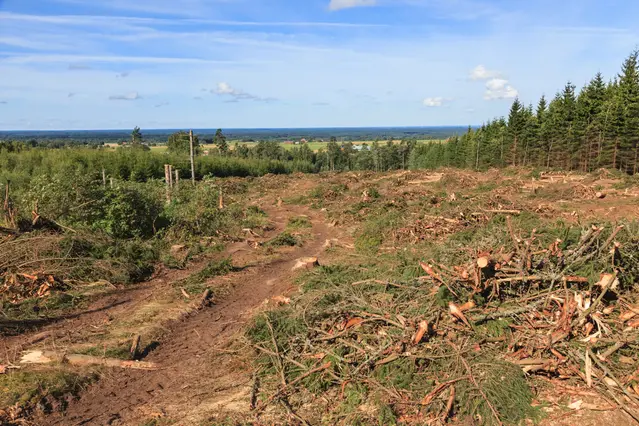Deforestation changed the climate in Europe during the Bronze Age
The vegetation in Europe has not always looked like it does today. Just as the ice sheet retreated in northern Europe and the population increased, man began to affect the landscape to a greater extent by deforestation. At first on a small scale to facilitate hunting, for example, and then more systematically to make way for agriculture. A new study shows that one of the consequences was changes in the climate.

It is perhaps difficult to imagine when you look out of the window that 6000 thousand years ago Europe was covered with forest. Between 6000 and 2500 years ago the landscape went through major changes, and 10 percent of the forest was cut down to make way for a growing civilization. The changes mainly took place in southern Europe where the population was larger.
Changed landscape means a changed climate
The climate system is affected by the land surface and how it interacts with the atmosphere. How the land is used affects, for example, the reflectivity of the land surface (albedo), which affects the radiation balance. When Europe was covered with forest the albedo was low, but as the trees were cut down the albedo increased. With high albedo over a larger area, the reflection of shortwave radiation increases. The difference in albedo is especially large between forest and open land during a winter with snow cover.
But it is not only the reflectivity of the land surface that is changed by deforestation. Both evaporation of water and winds are also affected – which in turn alters the energy exchange between the land surface and the atmosphere.
The models show an early impact
In order to see what effect the change in land surface had on the climate, the researchers led by Gustav Strandberg (SMHI) looked at reconstructions of the land surface derived from analysis of thousands of years-old pollen grains preserved in lake sediments. Using a vegetation model, they also simulated what the land surface would have looked like around 500 BC without human influence. The researchers then used global and regional climate models developed at SMHI to simulate Europe's climate, both as it was, according to the pollen data, and as it would have been without human influence, in order to make comparisons.
– The results show that humans had an early impact on the European climate. The so-called anthropogenic (human) changes were large enough to have an effect mostly on the summer temperature in southern Europe, says Gustav Strandberg, researcher in climatology at SMHI.
In southern Europe, it may have become up to 1.5 degrees warmer than it would have been without human influence.
– We have learned more about what the climate was like back then and about the climate system from the study. It also confirms insights that land use is important for the future climate in Europe, says Gustav Strandberg. We have also improved the models and can be sure that they will perform better in the future.


